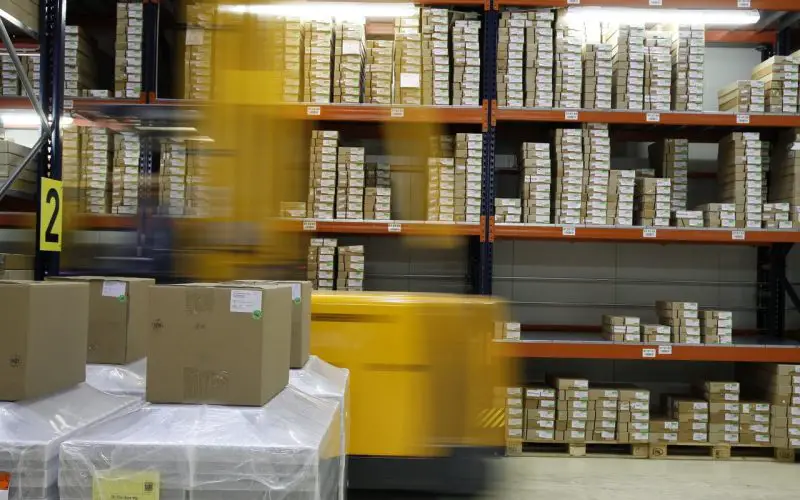In the fast-paced world of logistics and distribution, efficiency is the name of the game. Warehouses are the backbone of many industries, but the manual labor involved can be both physically demanding and time-consuming. Fortunately, in today’s digital age, there are numerous innovative solutions to help reduce the burden of manual labor in warehouses. Whether you’re a warehouse manager looking to streamline operations or simply interested in the future of warehouse automation, this blog post is for you. We’ll explore eight practical ways to harness technology and optimize processes, making your warehouse operations more efficient, cost-effective, and employee-friendly. Let’s dive in!
Automation and Robotics
Automation and robotics have revolutionized warehouse operations, significantly reducing manual labor. Automated guided vehicles (AGVs), robotic arms, and autonomous drones can perform tasks such as picking, packing, and even transportation of goods within the warehouse. You can go to https://topindustriesinc.com for the available options and cutting-edge solutions in the field of warehouse automation, helping businesses optimize their operations and stay competitive in today’s rapidly evolving logistics landscape.
Advanced warehouse management software can coordinate these robotic systems, optimizing workflows and inventory management. The result is a reduction in labor-intensive activities, lower operational costs, and increased throughput. To stay competitive, warehouses are increasingly integrating automation and robotics into their operations, providing a glimpse into the future of efficient and streamlined warehouse management.
Implement Warehouse Management Systems (WMS)
Warehouse Management Systems (WMS) are pivotal in reducing manual labor and enhancing warehouse efficiency. WMS software offers real-time visibility into inventory, helping streamline order fulfillment, inventory tracking, and allocation. By automating these processes, WMS minimizes the need for manual data entry and physical inventory checks, reducing errors and labor hours.
It also optimizes stock placement, ensuring fast-moving items are easily accessible. Furthermore, WMS supports advanced features like order batching and route optimization for pickers, further reducing labor requirements. Implementing a robust WMS is a strategic investment that empowers warehouses to meet customer demands more swiftly while minimizing labor-intensive tasks.
Optimize Warehouse Layout and Design
Efficient warehouse layout and design are fundamental in reducing manual labor. By strategically organizing storage, picking, and packing areas, you can minimize the time and effort required to move and locate items. Utilizing techniques such as ABC item classification and slotting, you can ensure that high-demand products are easily accessible.
Implementing narrow aisles and vertical racking can maximize storage space and minimize the distance workers need to travel. Moreover, optimizing traffic flow and minimizing congestion within the warehouse can reduce the time spent navigating the facility.
A well-designed warehouse layout not only enhances productivity but also reduces the physical strain on workers, leading to a more efficient and ergonomic work environment.
Utilize Conveyor Systems
Conveyor systems are a cornerstone of labor reduction in warehouses. These automated systems efficiently transport goods from one point to another, eliminating the need for manual carrying or pushing of heavy items.
Whether it’s roller conveyors, belt conveyors, or automated sortation systems, they are designed to move products seamlessly through the warehouse, minimizing the physical exertion required by workers. Conveyors can be integrated into various warehouse processes, including order picking, packing, and shipping, resulting in substantial time and labor savings.
Moreover, they enhance accuracy and consistency in product movement, reducing the risk of errors and increasing overall warehouse efficiency.
Voice and Pick-to-Light Technologies
Voice picking and pick-to-light systems are innovative technologies that streamline warehouse operations while reducing manual labor. Voice picking involves workers wearing headsets that provide verbal instructions for item retrieval, eliminating the need for written lists and constant manual checking.
On the other hand, pick-to-light systems use visual cues, such as illuminated displays or LED lights, to guide workers to the exact location of items. Both technologies enhance picking accuracy, reduce training time for new employees, and minimize errors, all of which contribute to a more efficient and labor-saving picking process.
Implementing these technologies can result in substantial labor savings and improved order fulfillment rates.
Batch Picking and Wave Picking Strategies
Batch-picking and wave-picking strategies are intelligent approaches to reduce manual labor in warehouses while enhancing efficiency. Batch picking involves selecting multiple orders at once, and consolidating items into a single picking cart or container. This reduces the need for multiple trips to the same location, minimizing labor and travel time.
Wave picking takes it a step further by grouping similar orders into waves, optimizing the picking process based on factors like location and product type. These strategies maximize worker productivity, reduce redundancy, and make better use of available labor resources.
By implementing these techniques, warehouses can significantly decrease manual labor while meeting increasing order volume demands.
Implement Cross-Docking Processes
Cross-docking is a warehouse strategy that minimizes the need for storage and manual handling of goods. In this process, incoming goods are immediately unloaded from inbound trucks and sorted for outbound shipments without entering long-term storage. This eliminates the labor-intensive tasks of picking, packing, and storing products, as items are swiftly transferred from the receiving area to the outbound shipping area.
Cross-docking requires efficient coordination and real-time information sharing to ensure the right products reach their destinations promptly. By adopting cross-docking practices, warehouses can reduce the reliance on manual labor, decrease storage costs, and improve order turnaround times, making it a valuable strategy for streamlining operations.
Train Employees and Use Ergonomic Solutions

Investing in employee training and ergonomic solutions is vital for reducing manual labor while ensuring the well-being of warehouse workers. Proper training programs equip employees with the skills and knowledge needed to operate machinery and automation systems efficiently. Well-trained staff can optimize workflows, reducing the need for manual labor in various tasks.
Additionally, implementing ergonomic solutions such as adjustable workstations, lift-assist equipment, and safety gear can minimize physical strain and the risk of workplace injuries, ultimately increasing worker productivity.
A workforce that is well-trained and supported by ergonomic solutions can significantly contribute to a more efficient and labor-reduced warehouse environment.
Optimizing warehouse operations to reduce manual labor is essential for enhancing efficiency, minimizing errors, and improving overall productivity. Embracing automation, smart technologies, and efficient processes such as batch picking and cross-docking can lead to substantial labor savings. Additionally, investing in employee training and ergonomic solutions not only reduces physical strain but also contributes to a safer and more productive work environment. By combining these strategies, warehouses can stay competitive in today’s fast-paced logistics landscape while ensuring the well-being of their workforce.








